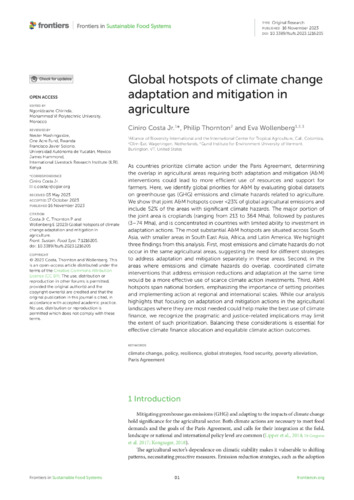Global hotspots of climate change adaptation and mitigation in agriculture
As countries prioritize climate action under the Paris Agreement, determining the overlap in agricultural areas requiring both adaptation and mitigation (A&M) interventions could lead to more efficient use of resources and support for farmers. Here, we identify global priorities for A&M by evaluating global datasets on greenhouse gas (GHG) emissions and climate hazards related to agriculture. We show that joint A&M hotspots cover <23% of global agricultural emissions and include 52% of the areas with significant climate hazards. The major portion of the joint area is croplands (ranging from 213 to 364 Mha), followed by pastures (3–74 Mha), and is concentrated in countries with limited ability to investment in adaptation actions. The most substantial A&M hotspots are situated across South Asia, with smaller areas in South East Asia, Africa, and Latin America. We highlight three findings from this analysis. First, most emissions and climate hazards do not occur in the same agricultural areas, suggesting the need for different strategies to address adaptation and mitigation separately in these areas. Second, in the areas where emissions and climate hazards do overlap, coordinated climate interventions that address emission reductions and adaptation at the same time would be a more effective use of scarce climate action investments. Third, A&M hotspots span national borders, emphasizing the importance of setting priorities and implementing action at regional and international scales. While our analysis highlights that focusing on adaptation and mitigation actions in the agricultural landscapes where they are most needed could help make the best use of climate finance, we recognize the pragmatic and justice-related implications may limit the extent of such prioritization. Balancing these considerations is essential for effective climate finance allocation and equitable climate action outcomes.

